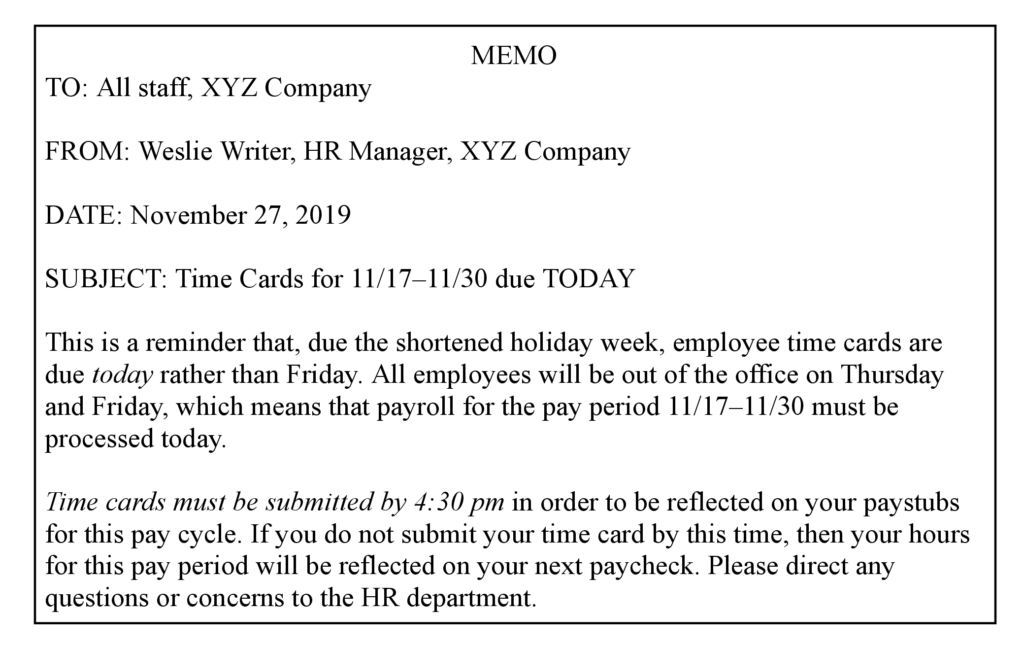Memo Guide
Click here to download a .pdf of our Memo Guide!
Last updated: October 7, 2023
Consider keeping a printed copy to have when writing and revising your resume! If you have any additional questions, make an appointment or email us at writing@boisestate.edu!
Writing a Memo
Memos have a twofold purpose: they bring attention to problems, and they solve problems. They are used to relay day-to-day communication within organizations. Memos are used to convey decisions, meeting agendas, policies, internal reports, and short proposals. Though there are conventions that memos generally follow, the formatting and layout of a memo may vary per country, organization, audience, and message. The following depicts a sample memo and a quick guide to writing an effective memo.

Quick Guide to Memos
1. Format your memo using block format.
- Heading – Include the “Date:”, “To:”, “From:”, and “Subject:” lines. A title of “Memo” or “Memorandum” may be requested at the top of the memo, center aligned, with or without capital letters.
- Date: (month day, year) e.g. July 3, 2023
- To: (readers’ names and job titles) e.g. Boise State University Students
- From: (your name and job title) e.g. Boise State University Writing Center
- Subject: (what the memo is about) e.g. How to format your memo heading!
- Opening segment – In the opening paragraph, state the purpose of communication, overview of message, context & problem, and or specific assignment & task.
- Block formatting – Memos typically follow block formatting rules: the entire message is left justified, single spaced except for an added space between paragraphs, with no extra indentation for paragraphs.
2. Choose an appropriate tone for your audience.
- Memos circulating within an organization reflect that organization’s work culture. Compared to formal communication outside an organization, these memos may be more semi-formal to informal.
- Audiences who are more “traditional” (the word is used loosely here) may necessitate higher formality. Friendly communications between co-workers is likely to be semi-formal. Informal, colloquial language is best reserved for talking to well-known associates or colleagues.
- Audience is very important when it comes to tone. Tone needs to be based around what the audience knows, needs to know, and what action should be taken.
- An effective memo is both detailed and concise. Things needs to be described accurately and well enough to understand, but not filled with unnecessary information
3. When and why to write a memo.
- Ensure that each of the memo’s recipients needs the information it contains. To whom is it relevant?
- Ensure that a memo is the appropriate genre and medium to communicate the message. Would it be more appropriate to communicate the information via a phone call, web call, or in-person?
- Memos are most effectively used when sent to a small to moderate number of people to communicate company or job objectives.